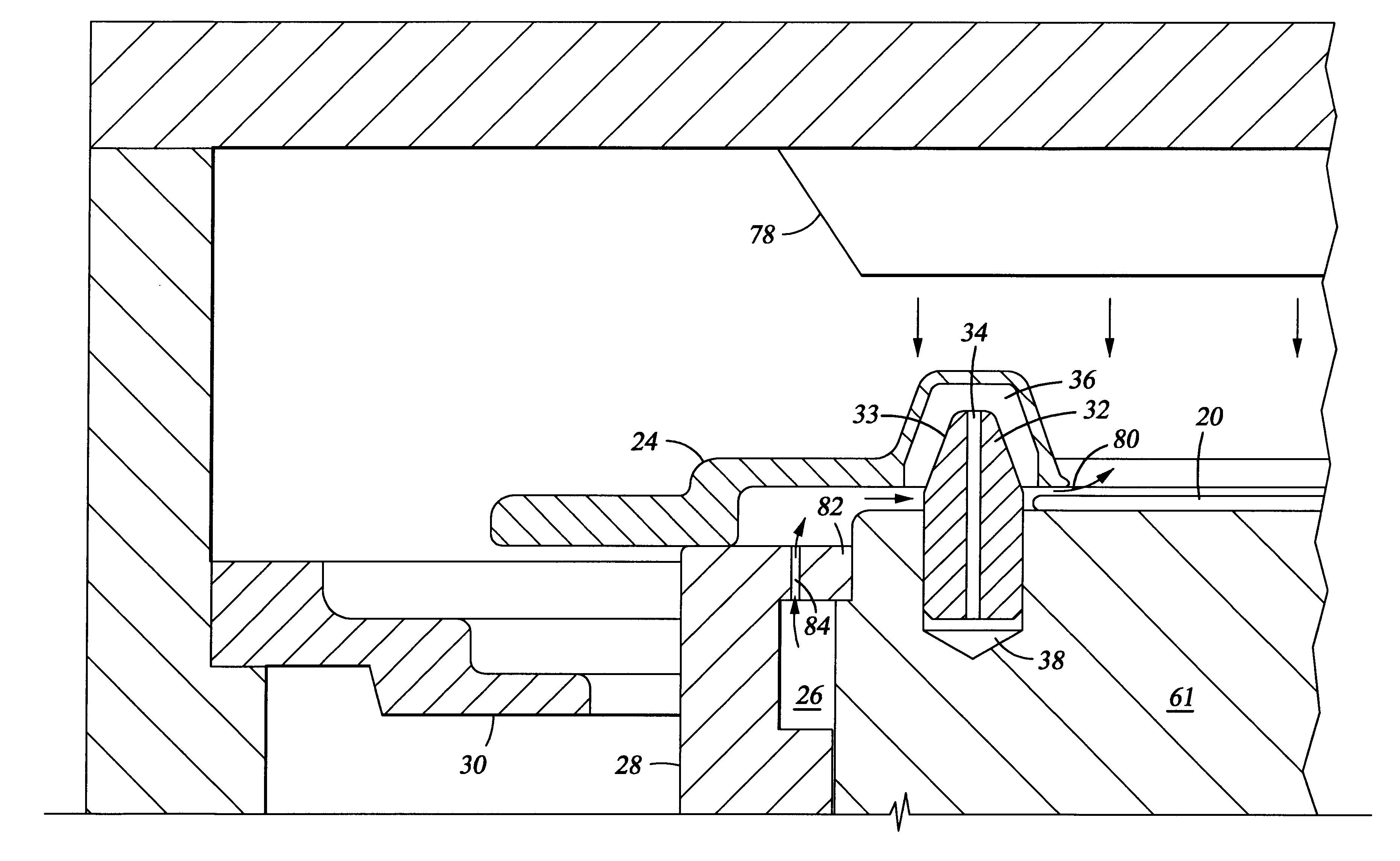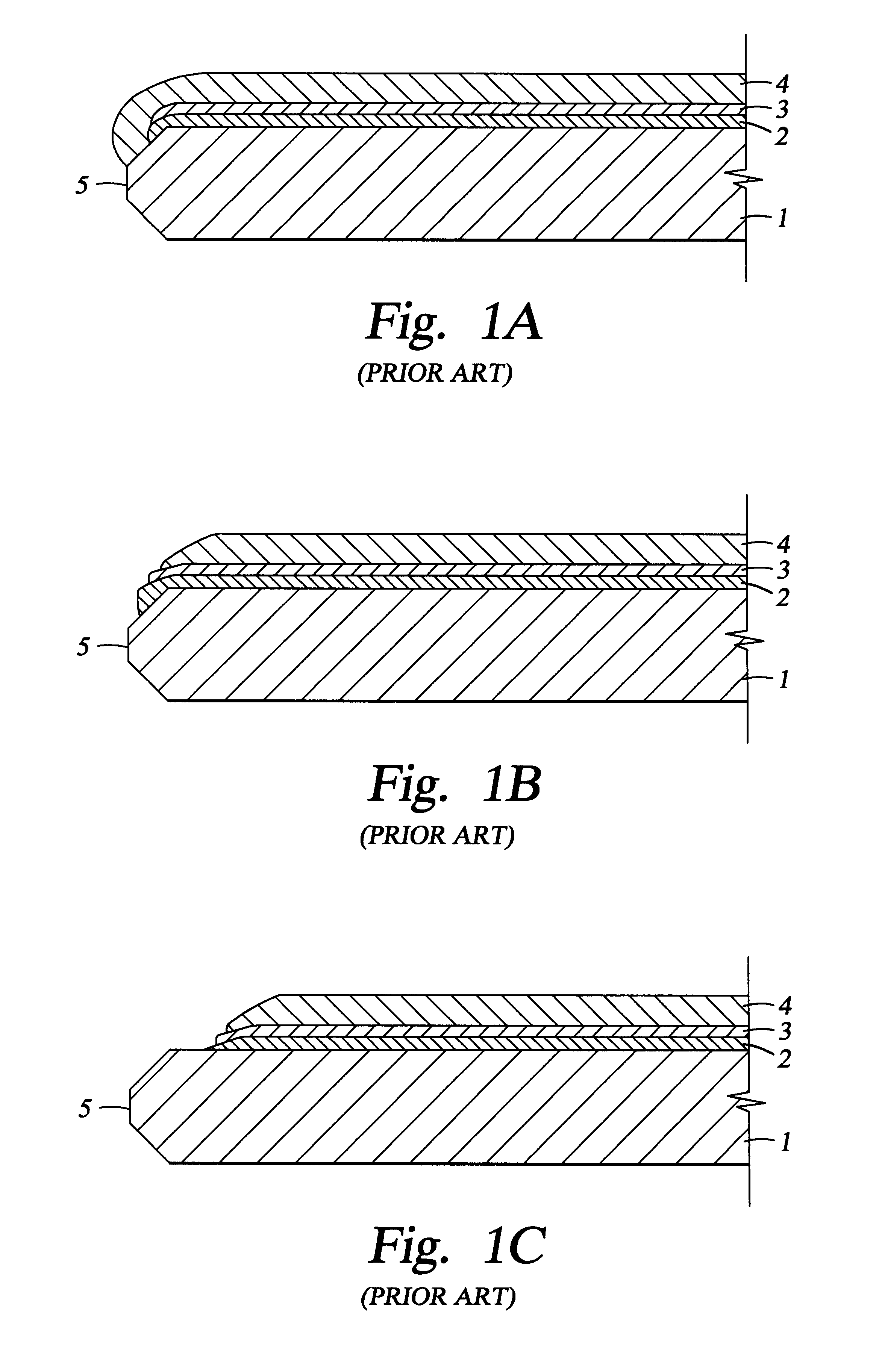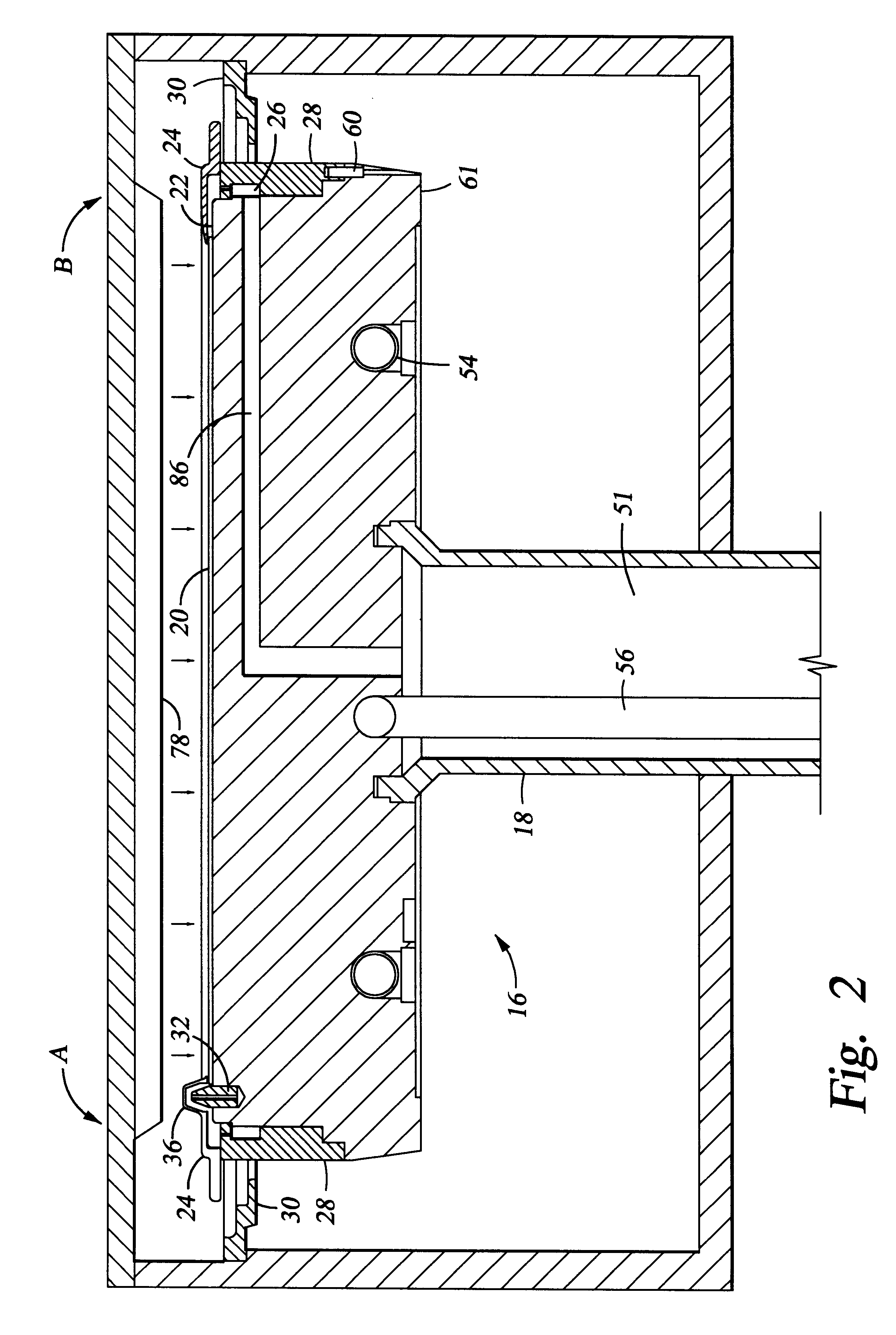Wafer edge deposition elimination
a wafer edge and deposition technology, applied in the direction of electrolysis components, vacuum evaporation coatings, coatings, etc., can solve the problems of incomplete shadowing of the wafer edge, failure of purge gas ring, failure of shadow ring,
- Summary
- Abstract
- Description
- Claims
- Application Information
AI Technical Summary
Benefits of technology
Problems solved by technology
Method used
Image
Examples
Embodiment Construction
1. Pedestal and Shadow Ring Architecture
In FIG. 2, a heater pedestal 16 is shown to comprise a main body 61 supported by a vertical stalk 18. Within the stalk 18 are a purge gas conduit 51, a housing containing a thermocouple (not shown) for measuring the temperature of the pedestal, and a conduit 56 for supplying power to a heating element 54 located within the main body 61 of the pedestal 16. The main body 61, which is typically made from aluminum, has a supporting surface 22 on which a semiconductor wafer can be supported. The surface 22 of the pedestal 16 may have formed therein a plurality of concentric vacuum grooves (not shown) for applying a vacuum to draw the wafer 20 onto the supporting surface 22 for improved uniformity of heating during operation. These vacuum grooves may take the form of concentric grooves and be supplied by a vacuum conduit (not shown) as described in pending U.S. patent application Ser. No. 08 / 626,789. The surface 22 may be textured to reduce the area...
PUM
| Property | Measurement | Unit |
|---|---|---|
| temperature | aaaaa | aaaaa |
| operating temperature | aaaaa | aaaaa |
| angle | aaaaa | aaaaa |
Abstract
Description
Claims
Application Information
 Login to View More
Login to View More - R&D
- Intellectual Property
- Life Sciences
- Materials
- Tech Scout
- Unparalleled Data Quality
- Higher Quality Content
- 60% Fewer Hallucinations
Browse by: Latest US Patents, China's latest patents, Technical Efficacy Thesaurus, Application Domain, Technology Topic, Popular Technical Reports.
© 2025 PatSnap. All rights reserved.Legal|Privacy policy|Modern Slavery Act Transparency Statement|Sitemap|About US| Contact US: help@patsnap.com



